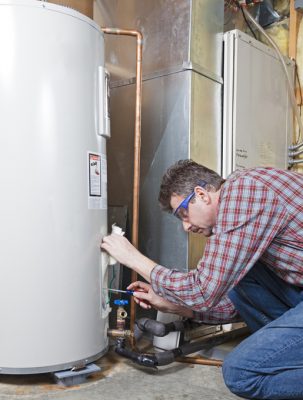Best Practices for Caring for Your Home's Hot Water System
Best Practices for Caring for Your Home's Hot Water System
Blog Article
We've found this great article on Tips For Maintaining Your Hot Water Heater directly below on the web and decided it made good sense to relate it with you on this page.

Warm water is essential for day-to-day comfort, whether it's for a refreshing shower or washing dishes. To ensure your hot water system runs efficiently and lasts much longer, routine maintenance is essential. This write-up provides practical pointers and understandings on how to keep your home's warm water system to stay clear of disruptions and pricey repairs.
Introduction
Keeping your home's warm water system might appear overwhelming, but with a few easy actions, you can guarantee it operates efficiently for many years to come. This guide covers whatever from understanding your hot water system to do it yourself upkeep tips and knowing when to employ specialist assistance.
Significance of Keeping Your Hot Water System
Routine maintenance not only expands the life expectancy of your warm water system but likewise ensures it operates successfully. Disregarding maintenance can bring about lowered effectiveness, higher energy bills, and even premature failure of the system.
Indications Your Warm Water System Demands Maintenance
Knowing when your hot water system requires attention can prevent major problems. Watch out for signs such as irregular water temperature level, unusual sounds from the heating system, or rusty water.
Understanding Your Warm Water System
Before diving into maintenance tasks, it's handy to recognize the basic parts of your hot water system. Commonly, this includes the hot water heater itself, pipelines, anode rods, and temperature controls.
Regular Monthly Upkeep Tasks
Regular regular monthly checks can aid capture minor concerns before they intensify.
Flushing the Water Heater
Purging your water heater removes debris accumulation, enhancing performance and extending its life.
Monitoring and Replacing Anode Rods
Anode rods stop corrosion inside the storage tank. Checking and changing them when worn is vital.
Inspecting and Readjusting Temperature Setups
Changing the temperature settings ensures optimum performance and safety.
Do It Yourself Tips for Maintenance
You can do several upkeep jobs yourself to maintain your hot water system in leading problem.
Checking for Leaks
Regularly inspect pipelines and connections for leakages, as these can lead to water damage and greater costs.
Checking Stress Relief Valves
Checking the stress relief valve ensures it functions correctly and avoids extreme stress build-up.
Insulating Pipes
Shielding warm water pipes lowers heat loss and can save energy.
When to Call a Professional
While do it yourself upkeep is advantageous, some issues need expert proficiency.
Complicated Issues Requiring Specialist Assistance
Instances include significant leaks, electric problems, or if your water heater is continually underperforming.
Routine Professional Maintenance Perks
Expert upkeep can consist of thorough evaluations, tune-ups, and ensuring compliance with safety standards.
Conclusion
Regular upkeep of your home's warm water system is important for efficiency, long life, and price financial savings. By adhering to these tips and knowing when to seek specialist assistance, you can make certain a dependable supply of warm water without unforeseen disruptions.
How to Maintain an Instant Hot Water Heater
Before tinkering with your hot water heater, make sure that it’s not powered on. You also have to turn off the main circuit breaker and shut off the main gas line to prevent accidents. Also turn off the water valves connected to your unit to prevent water from flowing into and out of the appliance. 2. When you’re done, you have to detach the purge valves’ caps. These look like the letter “T†and are situated on either side of the water valves. Doing so will release any pressure that has accumulated inside the valves while at the same time avoid hot water from shooting out and burning your skin. 3. When the purge valves’ caps are removed, you have to connect your hosing lines to the valves. Your unit should have come with three hoses but if it didn’t, you can purchase these things from any hardware or home repair shops. You can also get them from retail stores that sell water heating systems. Read the user’s manual and follow it to complete this task properly. When the hosing lines are connected, open the purge port’s valves. 4. You should never use harsh chemical cleaners or solutions when cleaning your unit. Make use of white vinegar instead. It should be undiluted and you’ll probably use about 2 gallons. 5. Now flush your water heater. This task should probably take about 40 minutes. We can’t give you specific directions for this because the procedure is carried out depending on the type, model and brand of your heater. With that being said, refer to the user’s manual. 6. When you’re done draining the unit, you have to turn off the purge port valves again. Remove the hosing lines that you earlier installed on each of the water valves. Put the valve caps (purge port) back in their respective places and be very careful so as not to damage the rubber discs that are found inside these caps. 7. Now that everything’s back in place, check your user’s manual again to find out how to reactivate your water heating system. 8. Once it is working, turn one of your hot water faucets on just to let air pass through the heater’s water supply pipes. Leave the tap on until water flows smoothly out of it. https://www.orrplumbing.com/blog/2014/september/how-to-maintain-an-instant-hot-water-heater/

We had been brought to that article about Tips For Maintaining Your Hot Water Heater through a buddy on a different web page. Enjoyed reading our write-up? Please share it. Help someone else discover it. Many thanks for your time spent reading it.
Schedule An Appointment Report this page